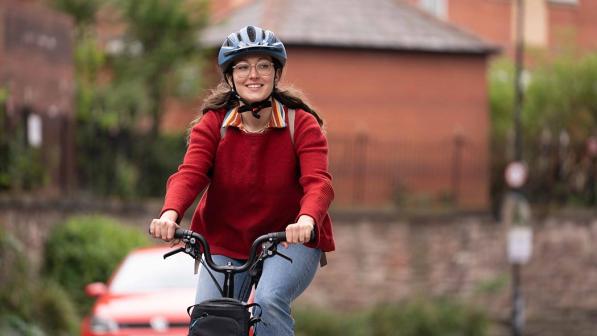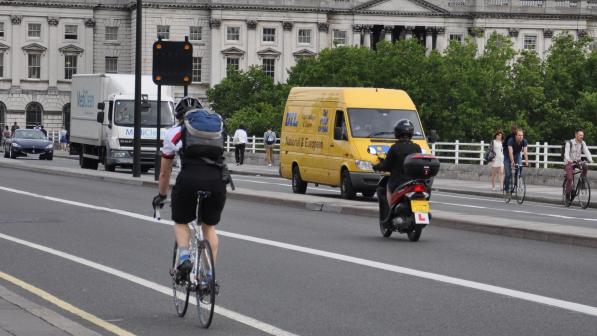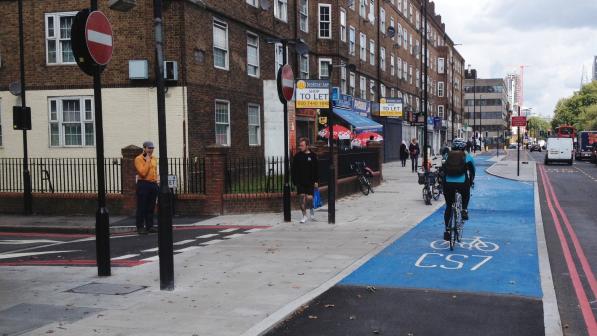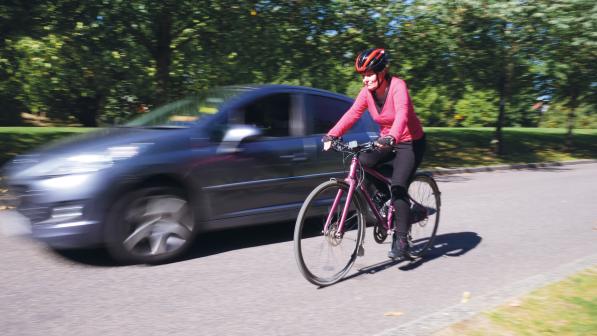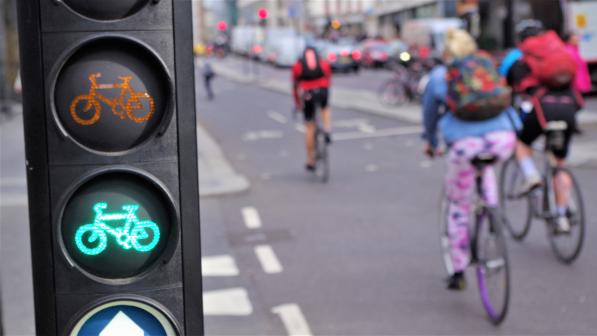Why should the Highway Code’s advice on cycle helmets and hi-vis be revised?

Background
There are 307 rules in the Highway Code (HC). Those saying ‘MUST’ or ‘MUST NOT’ relate to statute law, and breaching them is an offence.
Infringing the other rules is not inherently criminal, but may be used in court to decide whether a more general offence has been committed (such as ‘careless’ or ‘dangerous’ driving, or obstruction of the highway), or whether civil liabilities have occurred (whether someone is owed compensation for injury or property damages).
Typically, the HC is fully reviewed every six or seven years, but there has been no review since 2007, when Cycling UK’s campaigning led to 40 changes to the initial consultation draft.
Although some changes to the code have been made piecemeal, another comprehensive revision is long overdue, not least because of the need to ensure that the rules take account of the increasing automation of vehicles, and of various changes which have been made to traffic signs and signals (many of which have provided welcome benefits for cycling).
While Cycling UK argues that a full review is needed, there are four specific recommendations for rule changes which are particularly important either for cycle safety, or to prevent people from being deterred from cycling. These cover prejudicial rules on helmets and hi-vis (which we discuss here), along with rules on overtaking distances, ‘car dooring’ and junction priority (we discuss these in other articles).
Note: the Highway Code applies in England, Scotland and Wales (GB). There is a separate HC in Northern Ireland (NI), which is based on the GB version.
The specific rules referred to in this article are the same in both the GB and NI versions. Cycling UK’s recommendations on HC amendments are therefore relevant throughout the UK, but would need to be implemented separately in NI.
The current rule
Rule 59 of the Highway Code contains advice on what people should wear when riding a bike, including:
- A cycle helmet which conforms to current regulations, is the correct size and securely fastened
- Light-coloured or fluorescent clothing which helps other road users to see you in daylight and poor light
- Reflective clothing and/or accessories (belt, arm or ankle bands) in the dark
There are two pictures underneath the text setting out the rule, captioned: “Help yourself to be seen.”
Before outlining why this rule should be amended, it is important to clarify that Cycling UK is not opposed to wearing a cycle helmet. We are simply pro-choice, and believe decisions about whether or not to wear a helmet should be made by individuals, and in respect of children, by their parents or guardians. We adopt a similar stance regarding clothing.
Helmets
Cycling UK has an extensive policy briefing on helmets covering the:
- Impact of helmet promotion and compulsory helmet laws
- Low risks of cycling
- Deterrent effects of helmet laws and net loss to public health
- Exaggerated safety claims
- Enforcement problems
- Alternative ways to make cycling conditions safer
- Need for informed decisions
Our accompanying compilation of evidence sets out the detailed case for not making cycle helmets compulsory in law or the subject of promotional campaigns (this includes references to the data and findings mentioned below). Here, we focus on the public health consequences of such measures.
Essentially, Cycling UK’s opposition to both helmet promotion campaigns and helmet compulsion is based on the detriment to public health that accompanies both. This is because they lead to a reduction in cycling, an activity that offers enormous health benefits.
Helmet laws and drops in cycling use levels
Enforced helmet laws and helmet promotion have consistently caused substantial reductions in cycle use (30-40% in Perth, Western Australia). Although they have also increased the proportion of the remaining cyclists who wear helmets, the safety of these cyclists has not improved relative to other road user groups (for example, in New Zealand).
The resulting loss of cycling’s health benefits alone (that is, before taking account of its environmental, economic and societal benefits) is very much greater than any possible injury prevention benefit.
The evidence also suggests a particularly strong deterrent effect among teenagers, a key target group for efforts to encourage physical activity. If children can be persuaded to keep cycling as teenagers, the habit will probably last into their adult years. Conversely, those deterred from cycling as teenagers are much less likely to pick up the habit later on.
- Following the introduction of a helmet law in 1994, cycling trips in New Zealand initially fell by 26%, but continued falling to 51% below their pre-law levels by 2006. Estimates suggest that around 136,000 adults and children there (almost 4% of the total population in 1994) stopped cycling in the immediate aftermath of the legislation, 47,000 being teenagers (13-18 years old).
- Cycle use fell& sharply among young people in the immediate aftermath of the introduction of legislation in New South Wales and Melbourne in Australia. In New South Wales, the law came into effect in January 1991 for adults and in July 1991 for children. Figures from a major study, involving pre-law and post-law counts at 120 locations, showed that there was a 49% fall in under 16-year-old cyclists counted at road intersections, and a 48% drop in child cyclists counted at school gates between 1991 (pre-law) and 1993. There was also a smaller but still significant 32% fall in recreational areas. Thus, the greatest deterrent effect appears to have related to utility cycle trips made by children.
- In Victoria State, which includes Melbourne, a cycle helmet law was introduced in July 1990. Another major study, involving counts at 64 locations in the city, found that there was a 43% drop in cycle usage among teenagers (12-17 year olds) by 1991, and 45% by 1992, despite the fact that their numbers had been rising prior to the introduction of the law.
Helmet promotion and drops in cycle use levels
But these effects are not limited to places where laws making cycle helmets compulsory are introduced. Evidence also suggests that even the voluntary promotion of helmet wearing may reduce cycle use.
Research commissioned by the Department for Transport (DfT) found that, in areas where a helmet campaign was held, “a larger increase in helmet wearing was found than in the areas which had not held such a campaign. However, this increase was found to be strongly linked to a decrease in the numbers of cyclists observed. Also, in those areas where a campaign had been held and the numbers of cyclists had increased, helmet wearing fell.”
Similarly, a report for the European Conference of Transport Ministers noted that: “From the point of view of restrictiveness, even the official promotion of helmets may have negative consequences for bicycle use, and that to prevent helmets having a negative effect on the use of bicycles, the best approach is to leave the promotion of helmet wear to manufacturers and shopkeepers.”
Even picturing helmets on marketing materials designed to promote and encourage cycling appears to have an adverse impact: Danish research found that images of cyclists wearing helmets had a negative impact on people’s attitude to cycling, despite the apparently high public acceptance of bicycle helmets in Denmark.
Helmet compulsion and/or promotion: drops in cycle use v injury savings
Accordingly, a key issue in the helmet debate – and for Cycling UK the overwhelmingly important issue – is the need to weigh up whether any possible injury savings due to helmet wearing justify the likely reductions in cycle use which accompany either compulsion or promotion, and the consequent loss of its health, environmental and other benefits.
Addressing this question, Australian statistician Piet de Jong concluded that: “Even with very optimistic assumptions as to the efficacy of helmets, relatively minor reductions in cycling on account of a helmet law are sufficient to cancel out, in population average terms, all head injury health benefits.”
Based on de Jong’s evidence, Cycling UK estimates that if telling people to wear helmets (let alone requiring them to do so by law) led to reductions in cycle use of more than a fraction of a percent, the move would shorten more lives than helmets themselves could possibly save (even if helmets had miraculous safety properties).
Focusing on the benefits of cycling instead
Cycling UK believes that, instead of focusing on helmets, health and road safety professionals and others should promote cycling as a safe, normal, aspirational and enjoyable activity.
Although individual cyclists may sometimes choose to use helmets, either for confidence or because of the type of cycling they are doing, they should not feel under pressure to wear them.
For the sake of our health, it is more important to encourage people of all ages to cycle, than to make an issue of whether they use a helmet when doing so. This is our main reason for recommending that Rule 59 of The Highway Code should be amended to delete reference to helmets.
Rule 59 and civil/criminal proceedings
Our main concern over Rule 59 is that it routinely leads to victim blaming in civil and criminal cases. This is because defendants (or their representatives/insurers) sometimes try to claim that whether a victim was wearing a helmet or not made a difference to the outcome of a collision, and refer to the advice given in the HC. But, for example:
- If someone fails to see a cyclist in front and drives into them, whether or not the cyclist was or was not wearing a helmet is irrelevant to the causation of the collision
- If a cyclist dies from a collapsed chest after being crushed by a lorry, whether they were wearing a helmet is equally irrelevant
Nevertheless, it is highly likely that the question of their headwear will feature both in media reports and the court proceedings.
As currently drafted, Rule 59 creates the impression that a cyclist riding without a helmet is behaving irresponsibly and, in legal proceedings, it may be used to underpin attempts to deflect responsibility for the real cause of a collision.
Hi-vis and retroreflective clothing
Cycling UK has similar concerns regarding Rule 59’s advice on clothing, given that:
- There is no sound evidence that hi-vis clothing makes a positive impact on cyclists’ safety
- The rule is frequently used to blame cyclists when drivers fail to see them (because they have not helped themselves to be seen by wearing hi-vis), in order to deflect attention from their own apparent failure to look properly
Hi-vis research and its implications for Rule 59
Research on hi-vis clothing and other ‘conspicuity’ measures is outlined in Cycling UK’s briefing paper on the subject. In summary, it suggests that:
- Wearing hi-vis makes very little difference to how closely motorists overtake a cyclist
- While the rules refer to light-coloured or fluorescent clothing, it is in fact contrasting colours (colours that contrast with the background) which are likely to make a difference
- At night, retroreflective accessories attached to limbs make the most difference as far as detecting cyclists is concerned. This is because they move, and human beings are particularly sensitive to ‘biomotion’
On the basis of these findings, we note that:
- Rule 59 advises light-coloured or fluorescent clothing, yet a cyclist wearing a yellow jacket as they ride past a field of oil seed rape is less conspicuous against that background than someone wearing a black jacket and white shorts
- When cycling at night, retroreflective accessories attached to limbs (ankle straps, for example) probably make more difference than the colour of someone’s jacket, but the rule omits to mention this
- Nobody would accept the argument that a driver who crashed into a parked car should not be held responsible because the parked car was black. Yet Rule 59 has led to a situation where the colour of a cyclist’s clothing is commonly, and incorrectly, thought to be relevant to the cause of the collision. Victim blaming like this does nothing to promote road safety; rather, it can deflect focus from the true cause of the incident: someone’s failure to pay attention and look properly while driving.
The above recommendations were among 80 we made in our Cycle safety: make it simple response to the Department for Transport’s Cycle Safety Review (June 2018).
